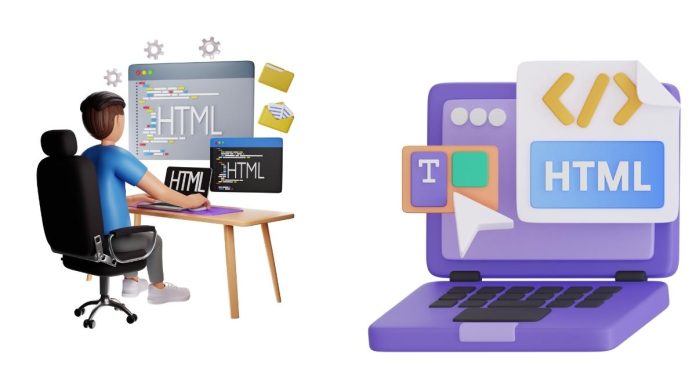HTML (HyperText Markup Language) is the foundation of every webpage on the internet. It defines the structure and content of a webpage using HTML elements, which serve as building blocks to organize and present information. Understanding HTML elements is essential for web development, as they determine how browsers interpret and display content.
What Is an HTML Element?
An HTML element is a component of a webpage that describes its structure and content. Each element consists of:
- Opening Tag: Indicates the start of the element (e.g.,
<p>). - Content: The text, images, or other elements contained within.
- Closing Tag: Indicates the end of the element (e.g.,
</p>).
For example:
Here, <p> is the opening tag, “This is a paragraph.” is the content, and </p> is the closing tag. Together, they form a paragraph element.
Types of HTML Elements
HTML elements are categorized based on their roles and usage:
1. Structural Elements
These elements define the layout and structure of a webpage:
<header>: Represents the introductory section, such as a page title or navigation links.<main>: Indicates the primary content of the page.<footer>: Represents the concluding section, such as copyright information or contact details.<section>: Defines thematic sections of content.<article>: Represents independent content, like a blog post or news article.
2. Text Content Elements
These elements format and display text on the webpage:
<p>: Defines a paragraph.<h1>to<h6>: Headings, from most important (<h1>) to least important (<h6>).<span>: Used for styling small portions of text.<strong>: Indicates strong importance, often displayed in bold.<em>: Represents emphasized text, typically displayed in italics.
3. Inline Elements
Inline elements do not start on a new line and only take up as much space as necessary:
<a>: Defines hyperlinks.<img>: Embeds images.<b>: Displays text in bold (without additional emphasis).<i>: Displays text in italics.
4. Multimedia Elements
These elements handle multimedia content like images, videos, and audio:
<img>: Embeds images.<video>: Embeds videos with attributes for playback controls.<audio>: Embeds audio files.<canvas>: Creates a drawing area for dynamic graphics.
5. Table Elements
For displaying tabular data:
<table>: Defines a table.<tr>: Defines a table row.<td>: Represents a table cell.<th>: Represents a header cell.
6. Form Elements
Used to collect user input:
<form>: Defines a form.<input>: Collects user input like text, passwords, or checkboxes.<textarea>: Collects multi-line text input.<button>: Defines a clickable button.
Void Elements
Some HTML elements, known as void elements, do not have closing tags. Examples include:
<img>: Embeds an image.<br>: Inserts a line break.<hr>: Inserts a horizontal rule.<input>: Represents an input field.
Attributes in HTML Elements
HTML elements often include attributes, which provide additional information or modify the behavior of the element. Attributes are written in the opening tag as name-value pairs.
For example:
href: Specifies the URL the link points to.target: Determines how the link opens (e.g.,_blankfor a new tab).
Nesting and Hierarchy
HTML elements can be nested, meaning one element can be placed inside another to create a hierarchy. Proper nesting ensures that webpages are structured and displayed correctly.
Example:
HTML elements are the backbone of web development, defining everything from structure to multimedia content. By mastering the use of these elements, developers can create well-structured, accessible, and visually appealing websites. Whether you’re a beginner or an experienced coder, understanding HTML elements is key to building a solid foundation in web design and development.


